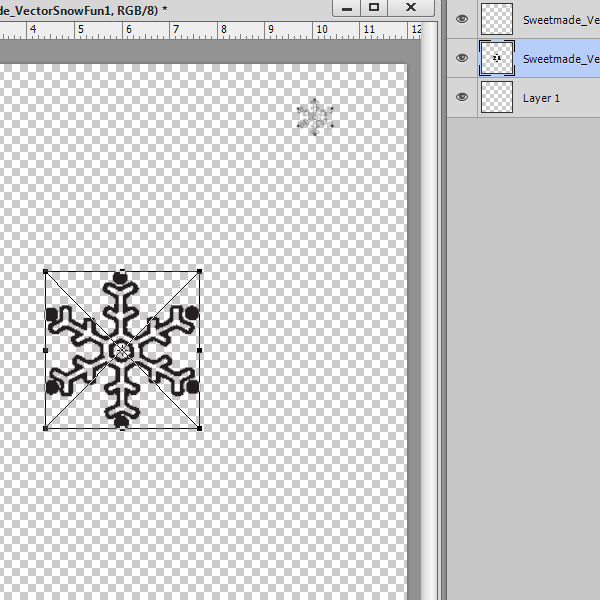Files types. Are you ever confused by them? Have you ever seen a product that you really wanted, but its file type was not supported by your software? That can be frustrating, as well as disappointing. Today I want to talk about Adobe Photoshop and Adobe Illustrator file types.
Adobe Photoshop users typically work with PSD, TIFF, and PNG files. These are pixel based drawings (files).
Adobe Illustrator users typically work with AI drawings (files), which are vector-based drawings in either EPS or PDF formats.
So what is the difference between a pixel-based drawing and a vector-based drawing?
Simply put, a pixel based drawing is based upon…. well, pixels. If you enlarge a pixel-based drawing too much, Photoshop has to add pixels to it in order for the drawing to maintain its appearance and shape. This process is called “interpolation” and is what causes pixel-based images to become blurred and/or pixelated if you enlarge them too much.
Vector images are created using mathematical equations. When you enlarge a vector image, Photoshop simply changes the mathematical formula to reflect the new size. No degradation of quality occurs.
Because vector images can easily be resized without loss of quality, EPS files are typically small in size. So if you try to “open” and use an EPS file in Photoshop, as you would a PNG file, you very likely will be disappointed in the image size.
Aneta (SweetMade) loaned me a snowflake from her Vector Snow Fun 1 Pack. I “opened” (File > Open) it on a 12 X 12 blank document. See how small and non-distinct it is? Disappointing, right? (Not Aneta’s fault! It was designed for Illustrator!)
Now let’s open it a different way in Photoshop! Go to File > Place (instead of “open”). Navitage to the EPS file you would like to open and click “Place.”
In the image below you will see that the snowflake was placed right in the middle of my blank document.
Just look at the difference in size between the “opened” snowflake (upper right corner) and the “placed” snowflake (middle of the document.)
Now just use the Transform Tool to resize the snowflake to the size appropriate for your needs.
In the image below I have enlarged both snowflakes to nearly 12 X 12 in size and zoomed the screen in so you can compare the quality of the snowflakes. Because the “placed” snowflake is enlarged by mathematical formula, it retains its sharp and clear edges. But notice how the pixel-based “opened” image is all blurry and jaggy? Not a pretty sight!
It is important to remember that once you Place an EPS file in Photoshop, Transform it, and press Enter to accept the new shape, it becomes pixel-based and you are no longer able to scale it up in size. However, you may scale it down if you wish, without loss of quality.
So that’s a simple way to use Illustrator EPS files easily in Photoshop!
Thanks, Aneta, for the use of the cute snowflake!!








[…] How to use Illustrator EPS files in Photoshop – 1 freebie(s)? […]
How do you get rid of the drop down menu that keeps showing up on the left that blocks viewing part of the tutorial? I can shrink it a little but I’d like to make it disappear so I can read the tutorial. Thank you.
Great tut … as always … and I learned something new. Never thought about opening Illustrator files this way (see — even old dogs can learn new tricks).
Thank you!!!! SO helpful when I was in a crunch and only had Photoshop and not Illustrator and needed to scale and eps file. Lifesaver 🙂
thanks awesome its a big help